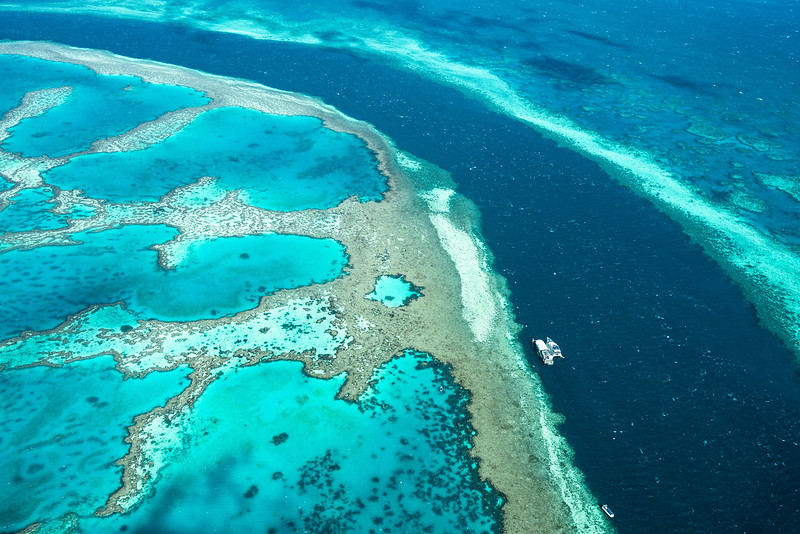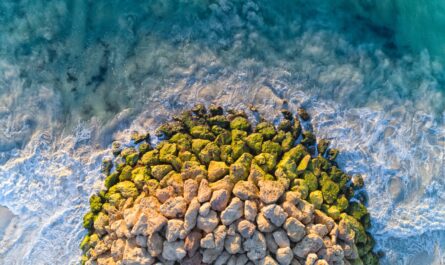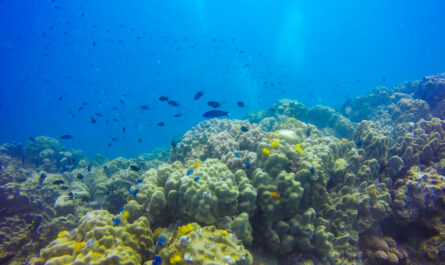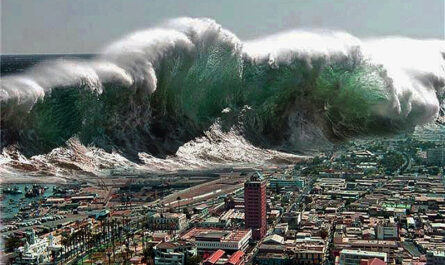The Great Barrier Reef, located off the coast of Queensland, Australia, is the world’s largest coral reef system and one of the most extraordinary natural wonders on the planet. Spanning over 2,300 kilometers (1,429 miles) and encompassing around 2,900 individual reefs and 900 islands, this UNESCO World Heritage site is an ecological marvel and an irreplaceable part of Earth’s biodiversity. However, it is also a fragile ecosystem facing numerous environmental challenges that threaten its existence.
Despite its size and resilience, the Great Barrier Reef is under unprecedented stress due to climate change, pollution, and other human activities. Its survival in the coming decades depends on global and local conservation efforts aimed at mitigating these threats.
1. Biodiversity of the Great Barrier Reef
The Great Barrier Reef is often described as a living laboratory due to its vast and varied ecosystems. It is home to approximately 600 species of hard and soft corals, 1,500 species of fish, and over 4,000 species of mollusks. In addition, it hosts 30 species of whales, dolphins, and porpoises, as well as several species of sea turtles, rays, and sharks. Many of these species are endemic, meaning they are found nowhere else in the world, which makes the reef’s protection even more critical.
The reef also plays a crucial role in supporting the livelihoods of local communities and contributes significantly to the Australian economy through tourism, fishing, and research. Millions of tourists visit the reef every year to experience its beauty, and the reef also provides a habitat for fisheries that sustain local economies.
2. Climate Change: The Leading Threat
The biggest threat facing the Great Barrier Reef is climate change. Rising sea temperatures, driven by the accumulation of greenhouse gases in the atmosphere, cause stress to coral reefs. When ocean temperatures exceed the tolerance levels of corals, a phenomenon known as coral bleaching occurs. During bleaching, corals expel the zooxanthellae, symbiotic algae that live in their tissues and provide the energy they need to survive. Without this algae, the corals turn white (bleach) and are left more vulnerable to disease and death.
The reef has experienced several mass bleaching events in recent decades, with the most devastating ones occurring in 1998, 2002, 2016, 2017, and 2020. The bleaching events of 2016 and 2017 were particularly severe, with large sections of the northern and central parts of the reef suffering extensive damage. Coral reefs that are frequently exposed to high-temperature stress are less likely to recover from bleaching events, leading to long-term degradation of the reef’s biodiversity.
Scientists estimate that the Great Barrier Reef has lost nearly 50% of its coral cover over the last few decades due to these recurring bleaching events, and without substantial action to limit global warming, more frequent and intense bleaching is expected in the future.
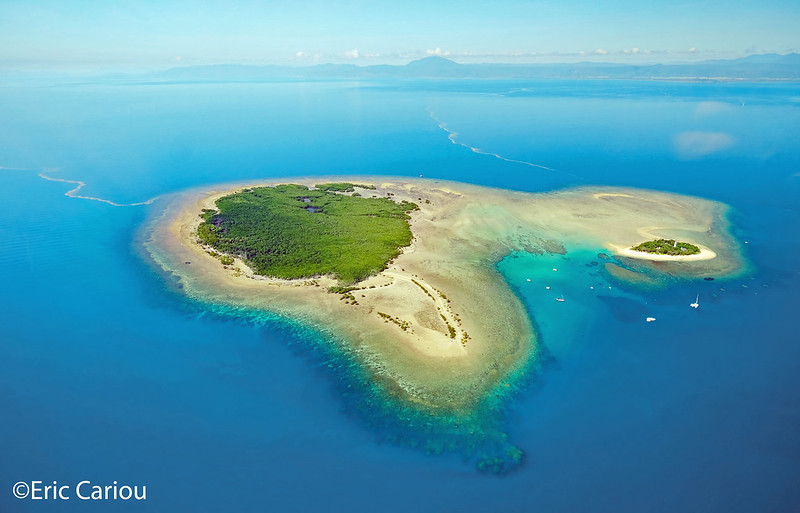
3. Ocean Acidification: Another Climate-Driven Threat
Another significant challenge the Great Barrier Reef faces is ocean acidification, a process caused by the absorption of carbon dioxide (CO2) into seawater. As the concentration of CO2 in the atmosphere increases, more of it is absorbed by the oceans, causing the water to become more acidic. This change in pH has a direct impact on the ability of marine organisms, particularly corals, to form calcium carbonate skeletons, which are essential for their growth and structural integrity.
Ocean acidification weakens coral reefs, making them more susceptible to physical damage, erosion, and disease. Additionally, it hampers the development of other marine organisms that rely on calcium carbonate structures, such as mollusks and crustaceans, thereby disrupting the entire ecosystem.
4. Human Activity: Pollution, Overfishing, and Coastal Development
Human activity also plays a significant role in the degradation of the Great Barrier Reef. Agricultural runoff, particularly from sugar cane and cattle farming, introduces pesticides, fertilizers, and sediments into the water. These nutrients fuel the growth of algae and other organisms that can overwhelm the reef, reducing water quality and further stressing the corals. Increased sedimentation also clouds the water, blocking sunlight, which is vital for coral photosynthesis.
Overfishing has also had a considerable impact on the reef’s ecological balance. Unsustainable fishing practices, such as trawling and the removal of key species like sharks and parrotfish, disrupt the food web and can lead to the collapse of certain populations. Marine species that depend on healthy reefs for habitat and food are at risk, contributing to the overall decline in reef health.
Coastal development is another factor that exacerbates the problem. The construction of ports, resorts, and infrastructure along the coast of Queensland can lead to habitat destruction, increased pollution, and more ship traffic, which puts the reef at risk of oil spills and physical damage from boats.
5. Coral Diseases: An Increasing Threat
Another growing concern is the rise of coral diseases, which have been linked to both climate change and human impacts. Warmer ocean temperatures create ideal conditions for the spread of diseases that affect coral health, such as white syndrome, black band disease, and brown band disease. These diseases cause coral tissue to degrade, further contributing to the decline in coral cover and diversity.
The weakened state of the reef due to bleaching and other environmental stressors has made it more vulnerable to disease outbreaks, creating a vicious cycle that accelerates coral loss.
6. Conservation Efforts and Technological Solutions
In response to the escalating threats, both the Australian government and international conservation organizations have launched significant efforts to protect and restore the Great Barrier Reef. The Reef 2050 Long-Term Sustainability Plan, introduced by the Australian government, aims to improve water quality, enhance ecosystem resilience, and promote sustainable tourism and fishing practices. The plan outlines steps to reduce agricultural runoff, limit coastal development, and restore damaged areas of the reef.
Additionally, scientific innovation is playing an increasingly important role in reef conservation. Techniques like assisted coral breeding, where corals are selectively bred to be more resilient to warmer temperatures, are being explored as a way to restore damaged areas. Another method being tested is the use of cooling and shading technologies, which involve deploying underwater fans or shading devices to lower the temperature in vulnerable areas of the reef.
Coral restoration projects have also been initiated, where damaged reefs are rehabilitated through the planting of coral larvae or fragments. While these efforts show promise, they are still in their early stages and will require significant scaling up to make a meaningful difference across the entire reef system.
7. The Importance of Global Climate Action
Despite local efforts to protect the reef, the future of the Great Barrier Reef ultimately depends on global action to mitigate climate change. Limiting global temperature rise to below 1.5°C, as outlined in the Paris Agreement, is essential for reducing the frequency and intensity of coral bleaching events and slowing ocean acidification.
The reef’s survival hinges on the collective will of the international community to reduce greenhouse gas emissions, transition to renewable energy sources, and implement policies that prioritize the health of the planet’s ecosystems. Without these actions, the Great Barrier Reef, along with other coral reefs around the world, will continue to face existential threats.
Conclusion
The Great Barrier Reef is a symbol of the beauty and fragility of the natural world. It is a global treasure of biodiversity, but it is increasingly at risk due to climate change, pollution, and human activities. The damage already sustained is significant, but there is still hope that with concerted efforts—both locally and globally—the reef can be preserved for future generations. The survival of the Great Barrier Reef is not just about protecting a single ecosystem; it is about safeguarding the future of the planet’s oceans and the countless species that depend on them.
